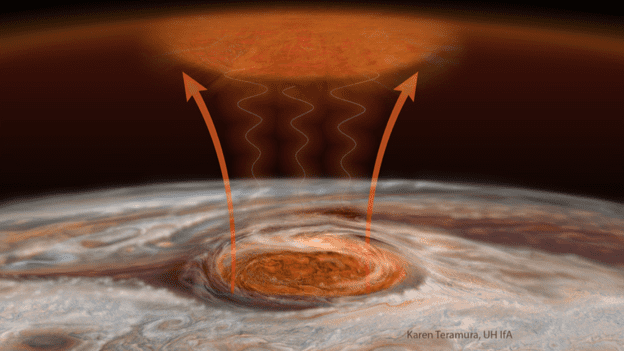
Astronomers have been wondering for years why Jupiter’s atmosphere is so hot, and now they may finally have the answer: it’s all because of the red spot.
As most of us have learned in school, Jupiter’s Great Red Spot is a huge storm lasting for 186 years already, and with many more to come. Such storms are quite common in gas giants, owing their formation to the turbulent and extremely violent atmospheres. Recently, a joint team from the US and the UK used an infrared telescope in Hawaii to measure the temperature of the red spot, and came up with an enormous value: 1,500C (2700 Fahrenheit) — hundreds of degrees hotter than anywhere else on the planet. They believe that the high temperatures are created by soundwaves “breaking” in the thin upper reaches of the atmosphere.
The red spot itself is huge — bigger than Earth, constantly moving and changing its size (though not drastically). According to the study, which was published last week in Nature, as the storm roars on, its roar blasts the upper atmosphere, exciting particles there and raising their temperature. This came as a surprise because researchers didn’t believe something so low in the atmosphere (the spot) can affect something so high (the upper atmosphere).
Of course, this isn’t the only source of heat on the planet. The stripes (which move in one direction) and the clouds (which move in the other) create heat through friction, and the magnetic field heats the two poles which zip past each other at speeds comparable to that of light. But we knew all this – what we didn’t know is the effect of the red spot. This is the anomaly responsible for Jupiter’s so-called energy crisis.
This is another reminder that there are still many things we have yet to find out about the gas giant. Jupiter’s system remains a mystery, but one that we’re slowly starting to crack.






